
Rede Odonto Empresas
Portal do prestador
Project duration
2022-2022
Team
Service Designer
Suporte do produto
My role
Service Designer

2022-2022
Service Designer
Suporte do produto
Service Designer
The Odonto Empresas Network Provider Portal is the main interface between the dental clinic and the health plan. It is through this portal that providers register clients, check authorizations, analyze and resubmit procedures, access the reimbursement schedule, and request appeals against denied claims.
Design inconsistencies and flaws in the authorization process were found, hindering the execution of basic tasks. Furthermore, there was a high volume of calls to technical support, especially to clarify doubts about the progress of requests and to authorize procedures.
Therefore, we defined our challenge:
"How can we make the procedure authorization process faster, clearer, and more effective, reducing the volume of errors and support calls?"
At the end of this project, our objectives were:
1. Reduce the volume of calls to technical support;
2. Increase clarity and transparency regarding the status of requests;
3. Simplify the procedure authorization process;
4. Increase user satisfaction and internal operational efficiency.
As a Service Designer, I conducted a heuristic evaluation of the Provider Portal, identifying and refining critical information based on metrics and data gathered from the technical support team at Rede Odonto Empresas. Based on these findings, I redesigned the Authorization Journey, proposed a new Information Architecture, and developed the revised portal interface, aligning usability, clarity, and visual consistency.
To understand the problem and define its scope, I began with a heuristic analysis of the portal in its current state. Design inconsistencies, flow redundancies, and usability issues were identified that hindered the registration and tracking of authorizations.
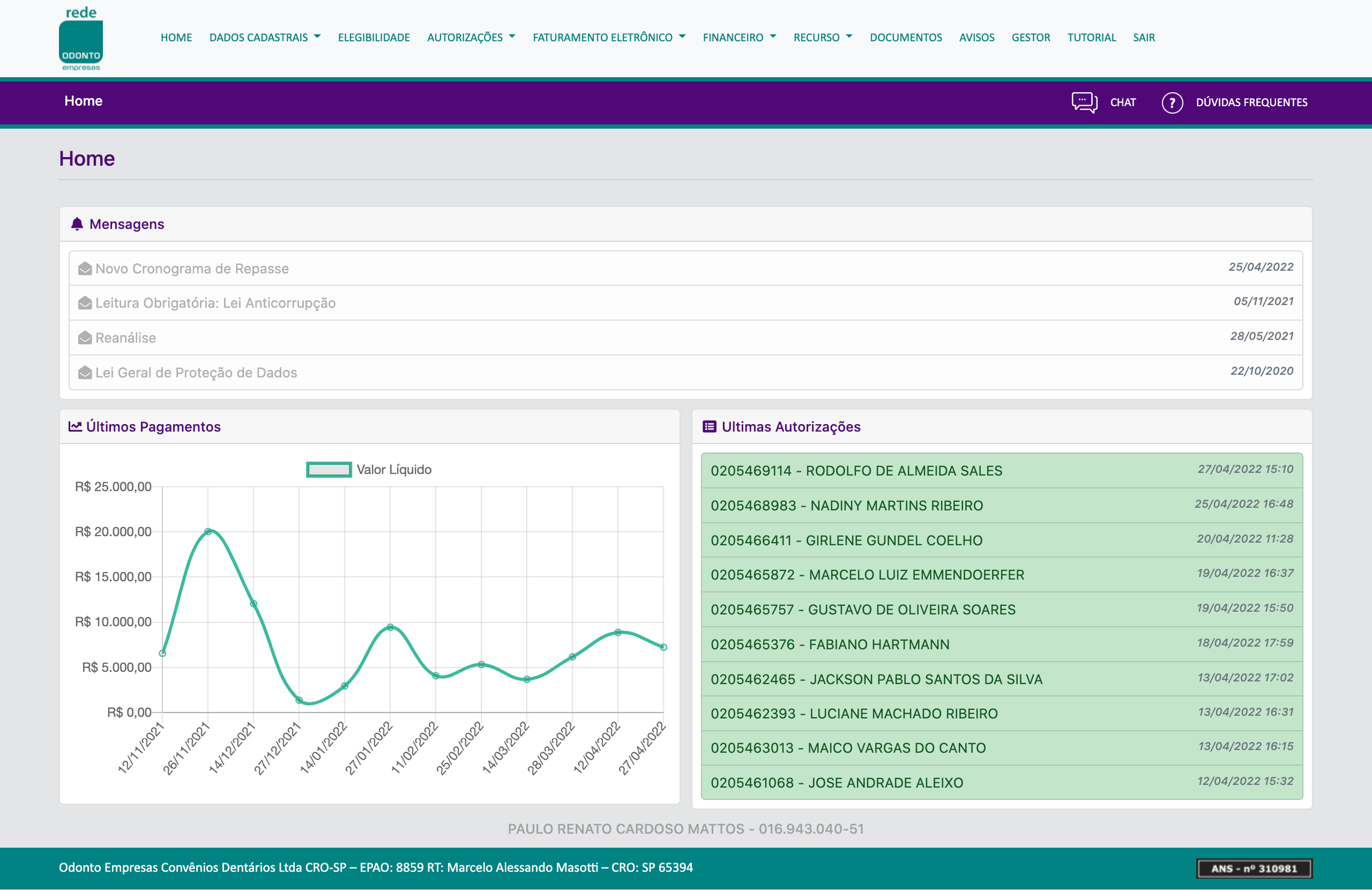
Portal do Prestador Homepage


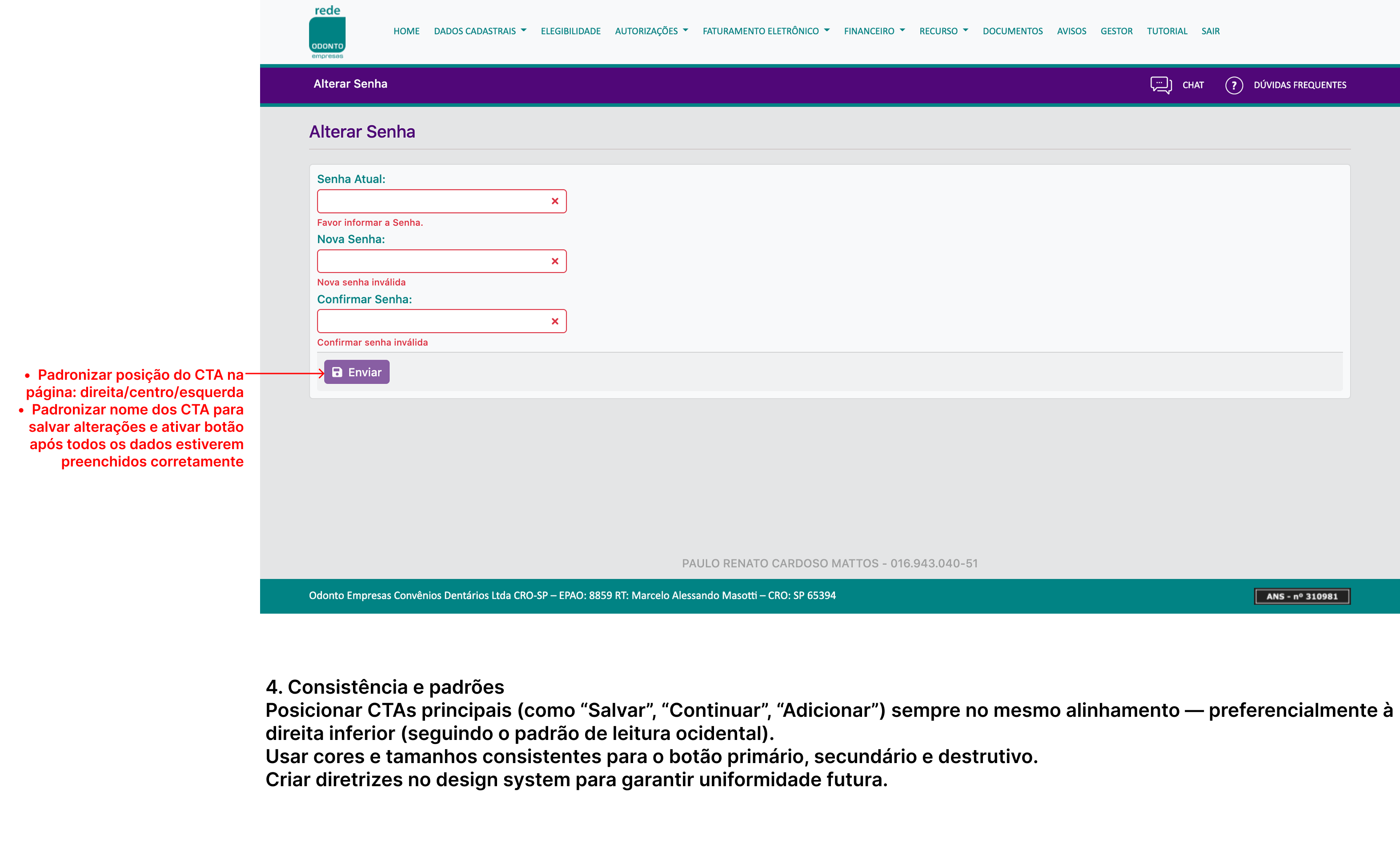
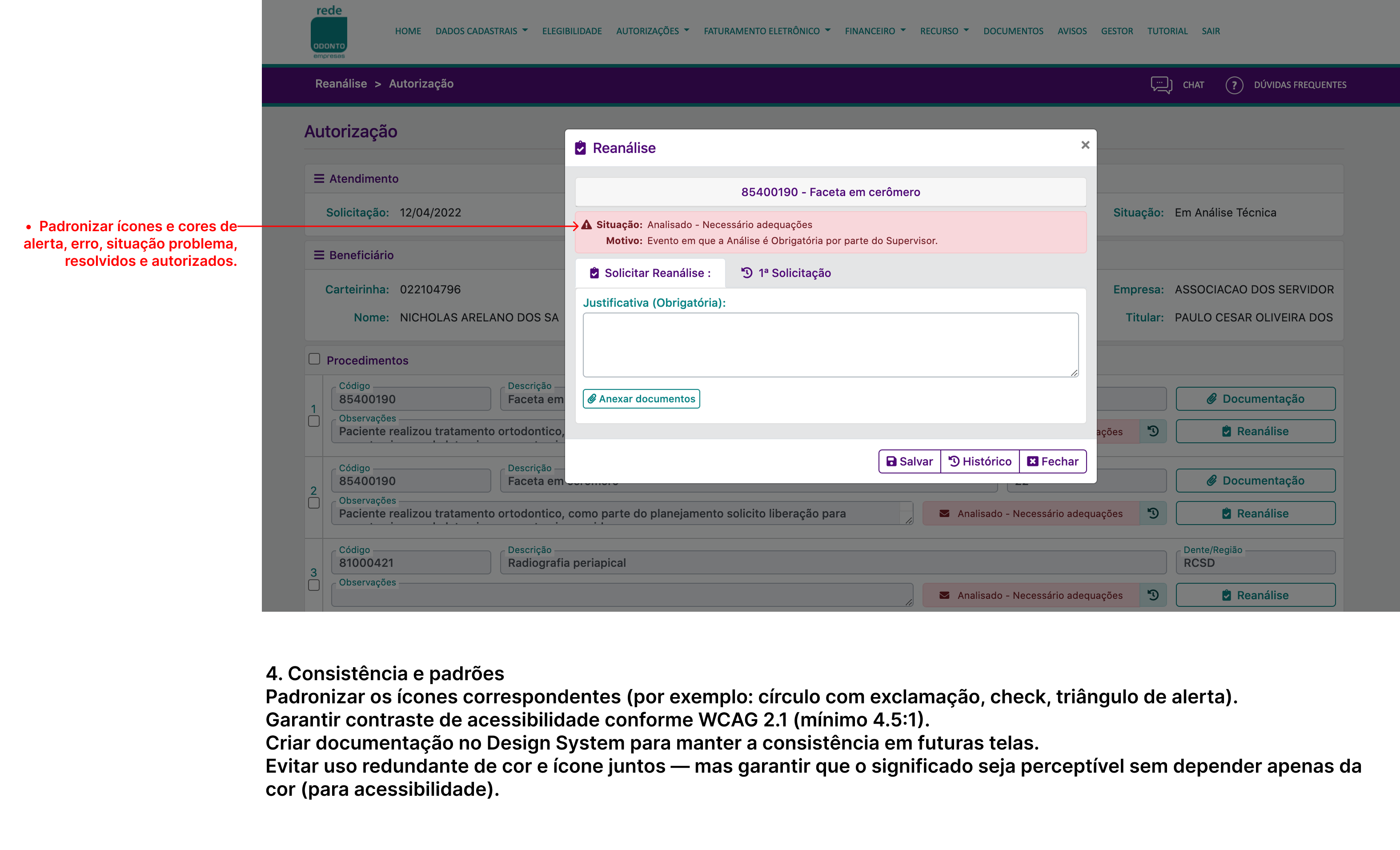
Several screens show annotations of interface design flaws, heuristic analysis ratings, and recommendations.
Next, I conducted a data and information survey with the Network's support team and realized that the number of calls to technical support was high and recurring. Clients sought help to understand the progress of different requests and, mainly, to authorize procedures. The most frequent complaints pointed to the low usability of the system, actions that needed to be repeated several times, lack of clarity in the workflows, and little transparency about the status of requests. In addition, we had various data on the clinics, whether they were accredited, active or not, several NPS scores from the Portal over the last 4 years, collected month by month, among other things.
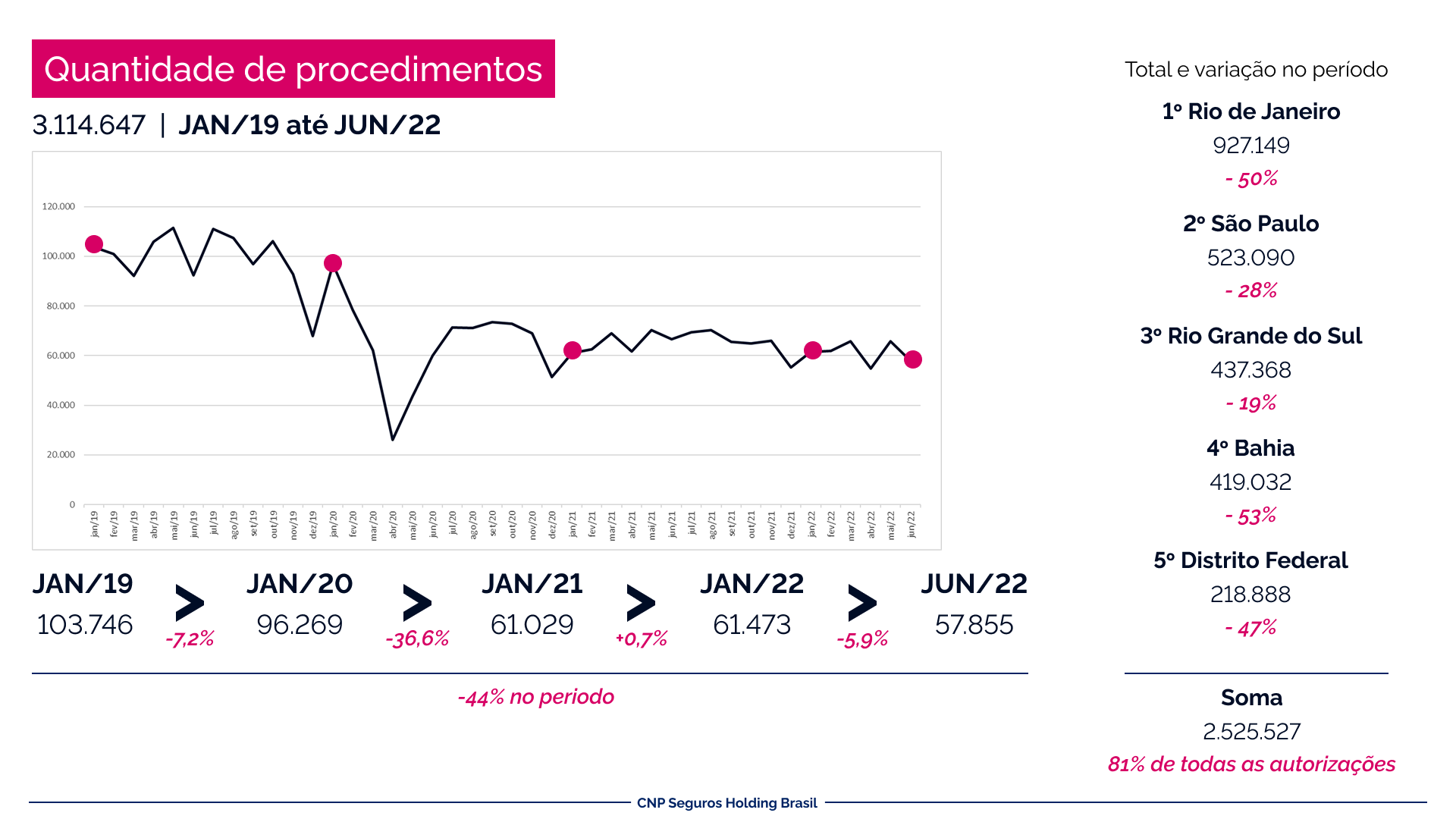
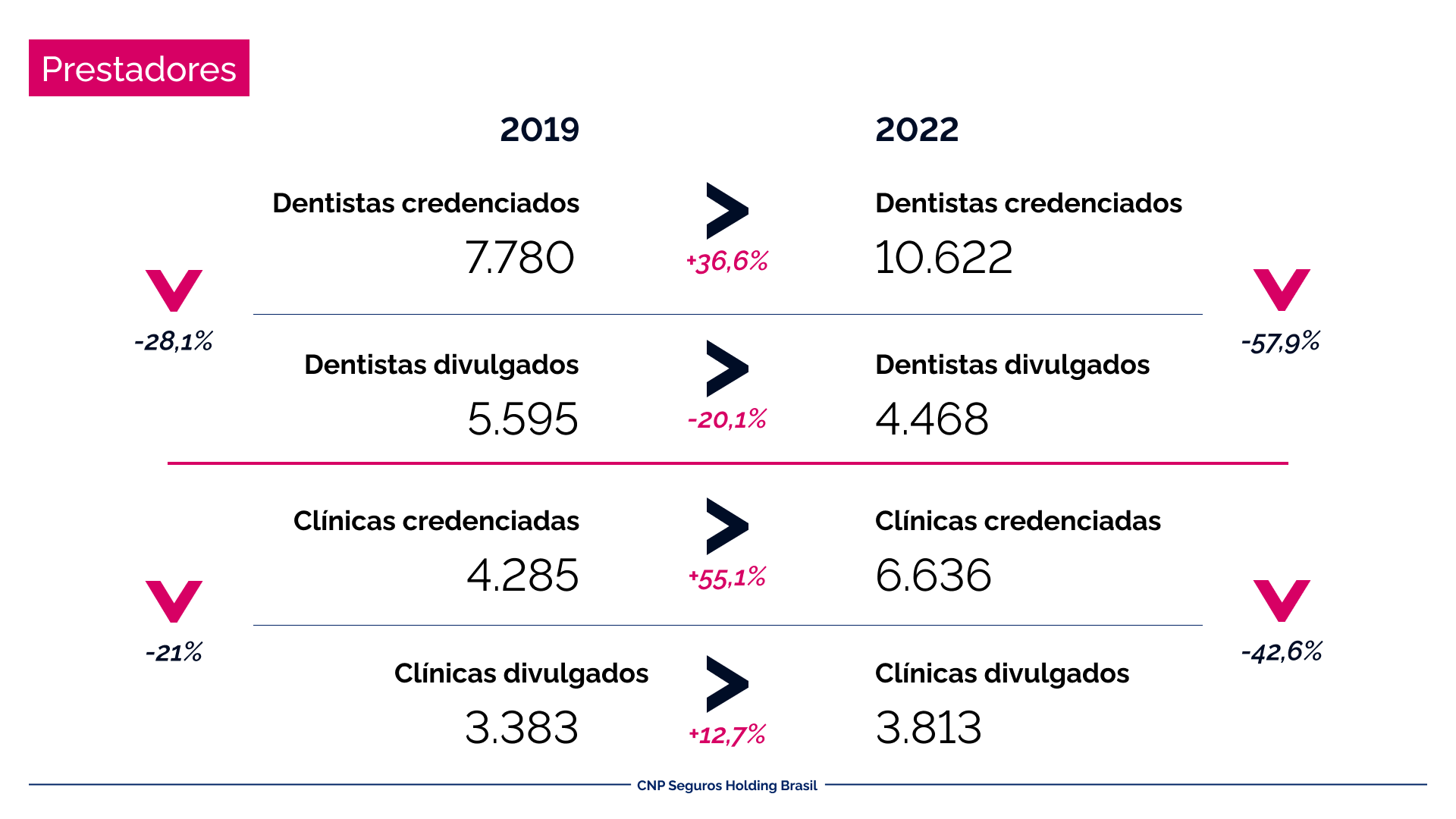
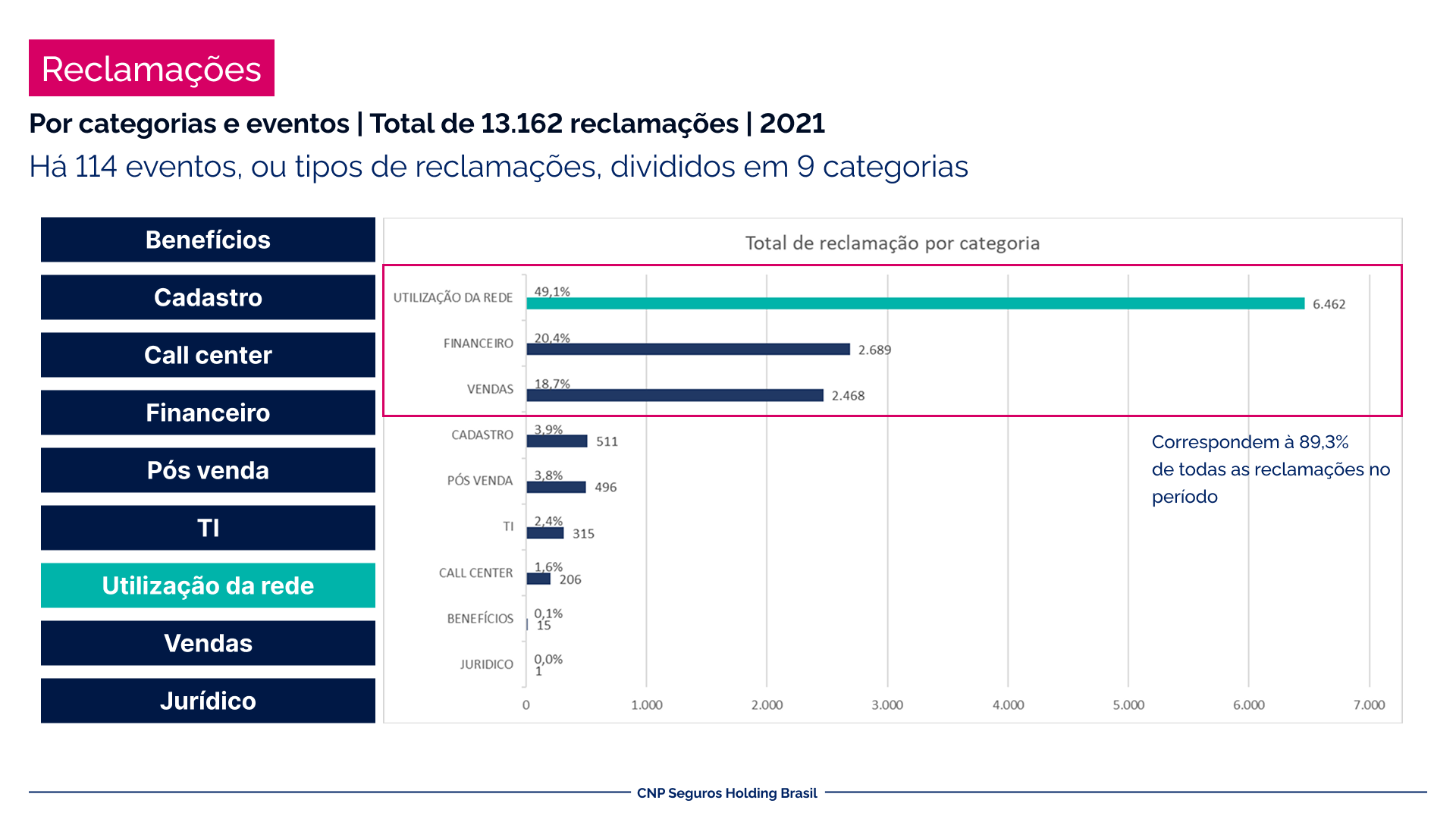

Some of the data collected with the support of the Odonto Empresas Network
In gathering complaints, I focused on detailing those related to Network Usage, just as complaints about system usage were classified, which could stem directly from the portal interface or be a problem with the user journey. For the other complaints, I created a CSD matrix and classified them for a next step.

Classification by type of complaint


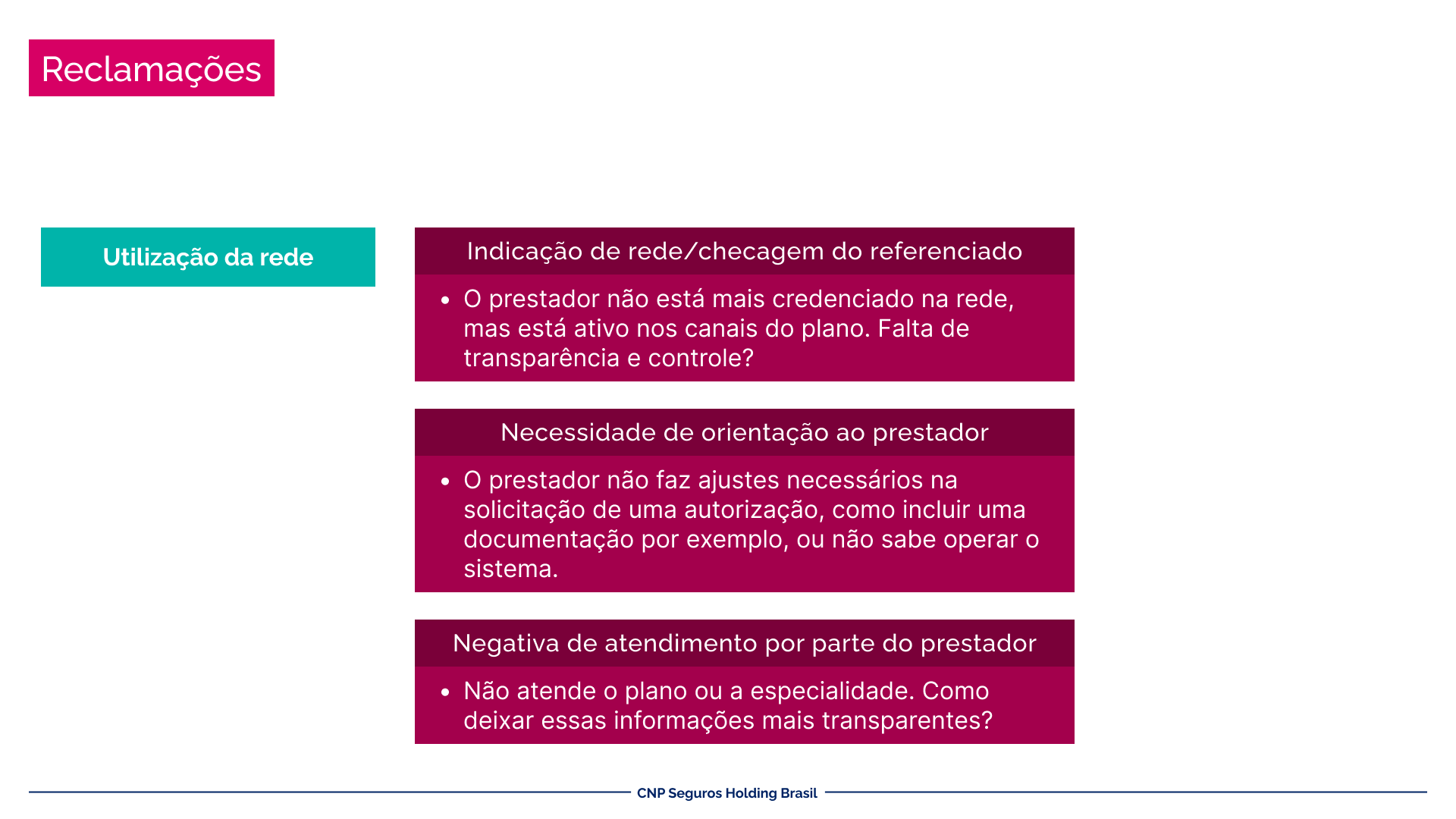
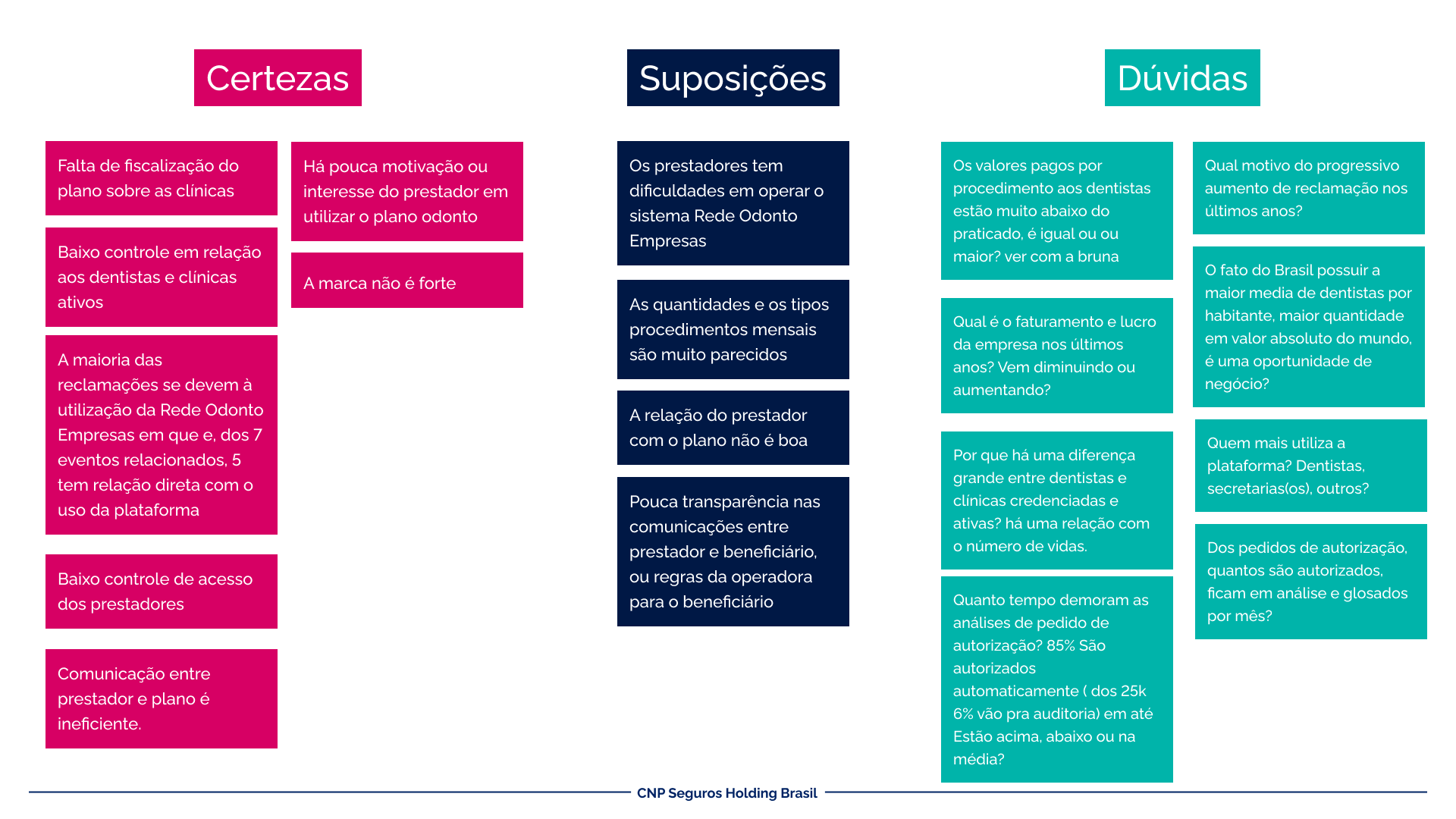
Some detailed complaints regarding network usage and the CSD matrix of other complaints.
I also mapped all existing menus and submenus, analyzing the information architecture structure. This map was essential to propose a new, more rational and intuitive model, reducing the depth of clicks and grouping related functionalities.

Menus and submenus of the Provider Portal

Provider Portal information architecture before restructuring.
Based on user feedback, evidence from support data, and analysis of the existing architecture, the Authorization Journey was completely redesigned. The new flow aimed to eliminate redundant steps, improve the clarity of statuses, and drastically reduce the need to contact support. In addition to the main journey, the flows of the administrative and audit teams, responsible for analyzing and validating requests, were also optimized.

Redesigned authorization process
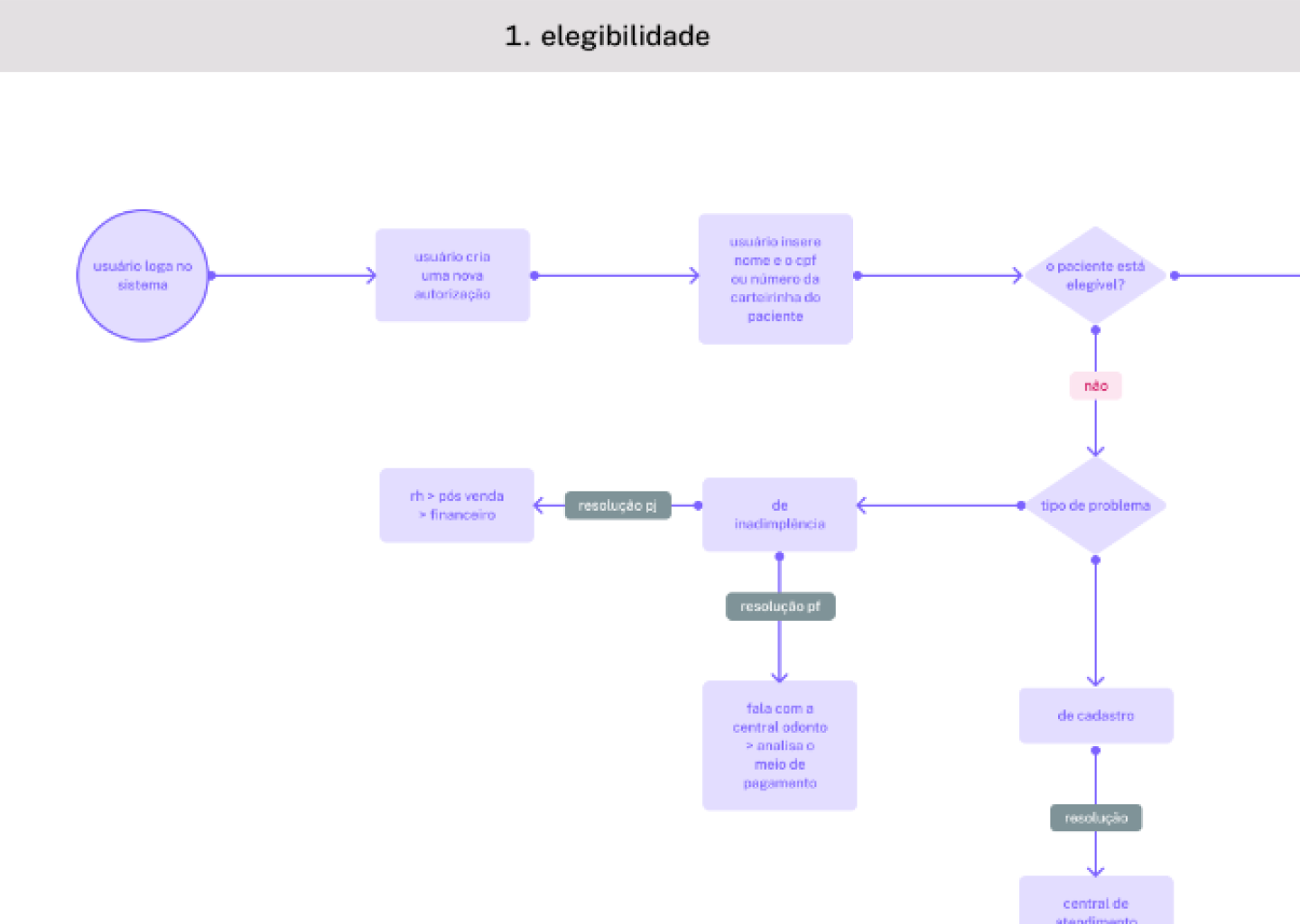

Details of the new authorization process.

New information architecture for the Provider Portal
Following a complete review of the process, I redesigned the Provider Portal interface in both its web and mobile versions, ensuring visual consistency, standardized CTAs, and a clear information hierarchy. The new interface was designed to guide the user more smoothly, with visual feedback, clear status messages, and automatic validations that prevent data entry errors. The central principles of the redesign were communication, integration, and closer collaboration—strengthening the relationship between the provider and the health plan and reducing operational noise.
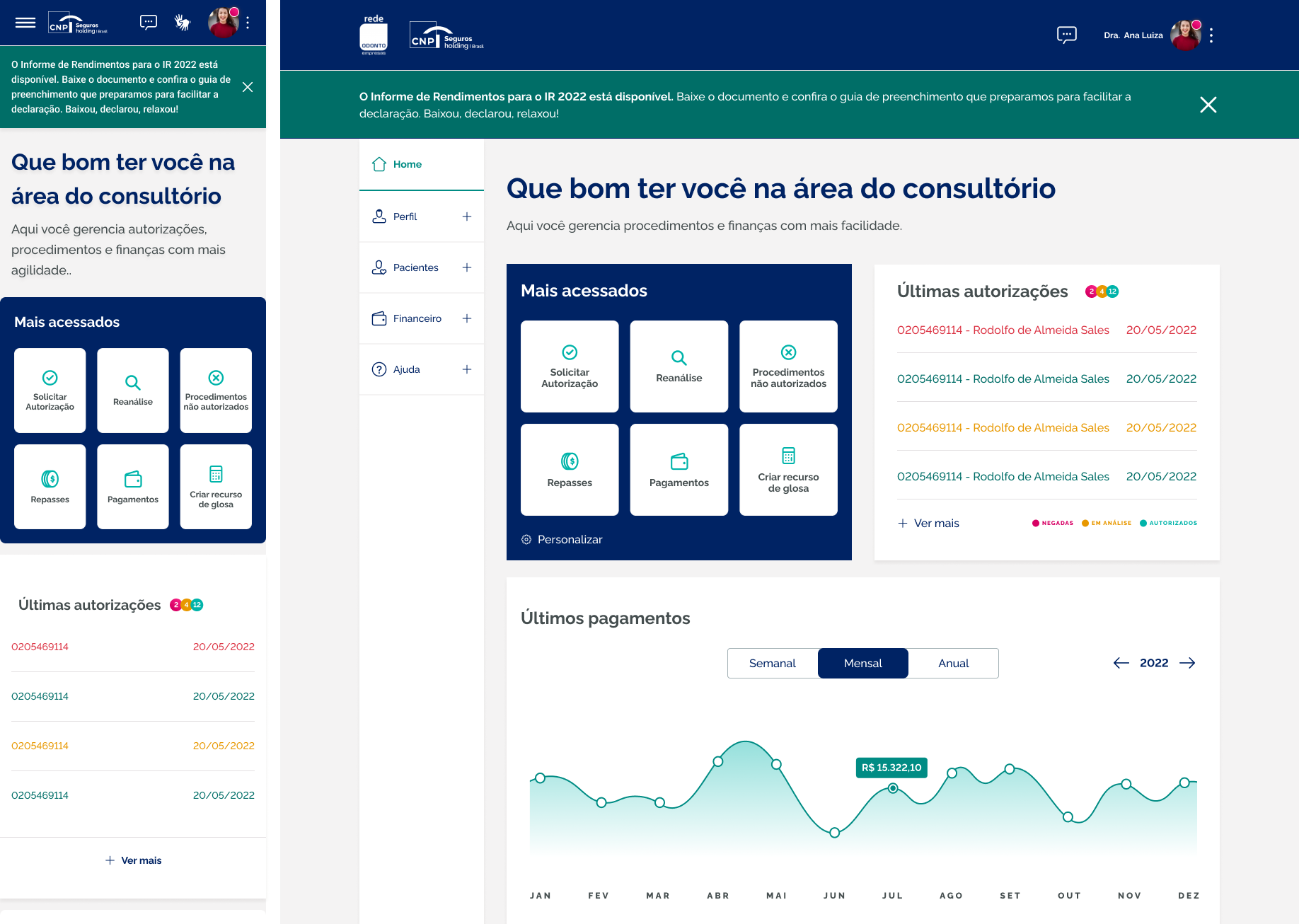


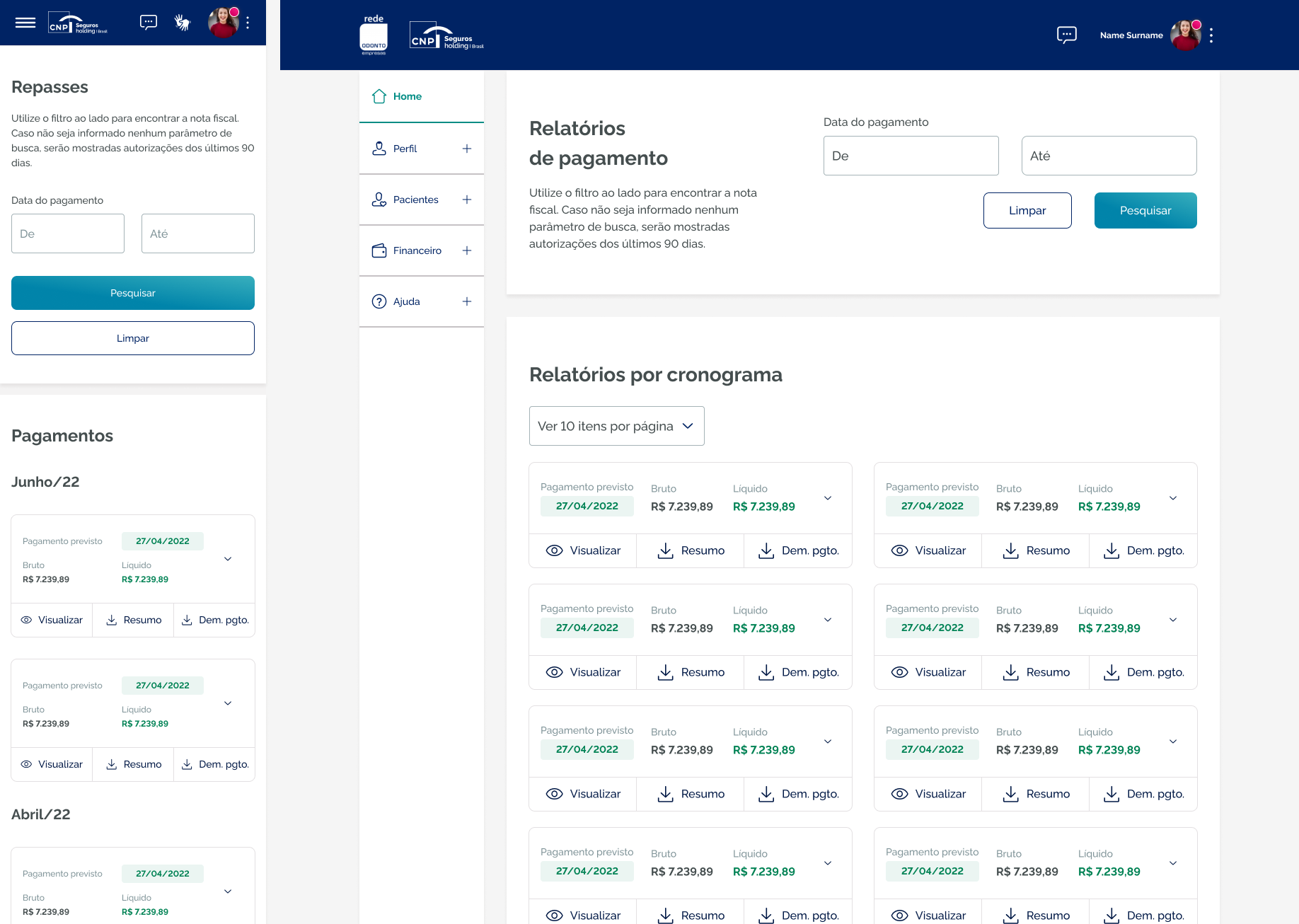
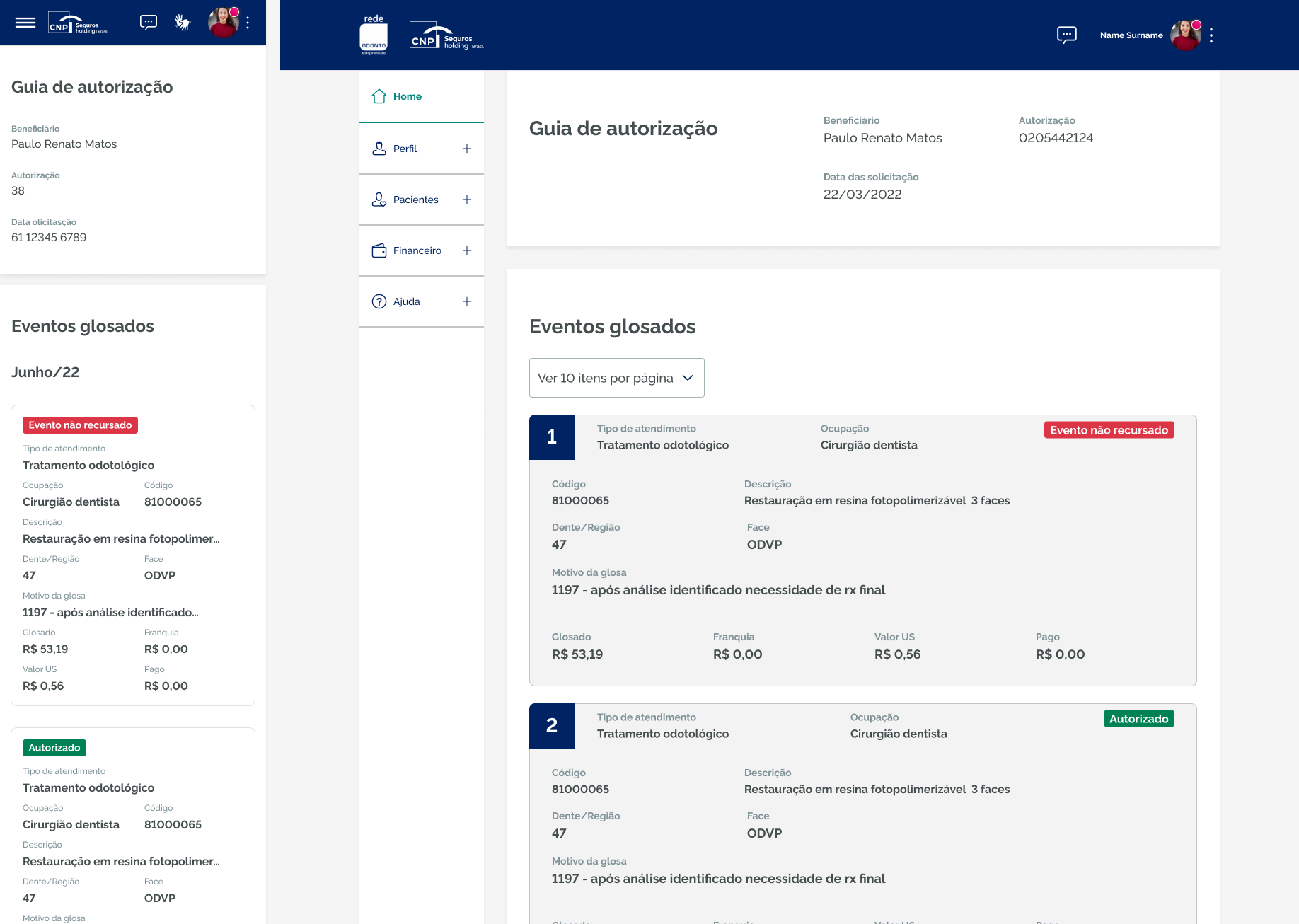
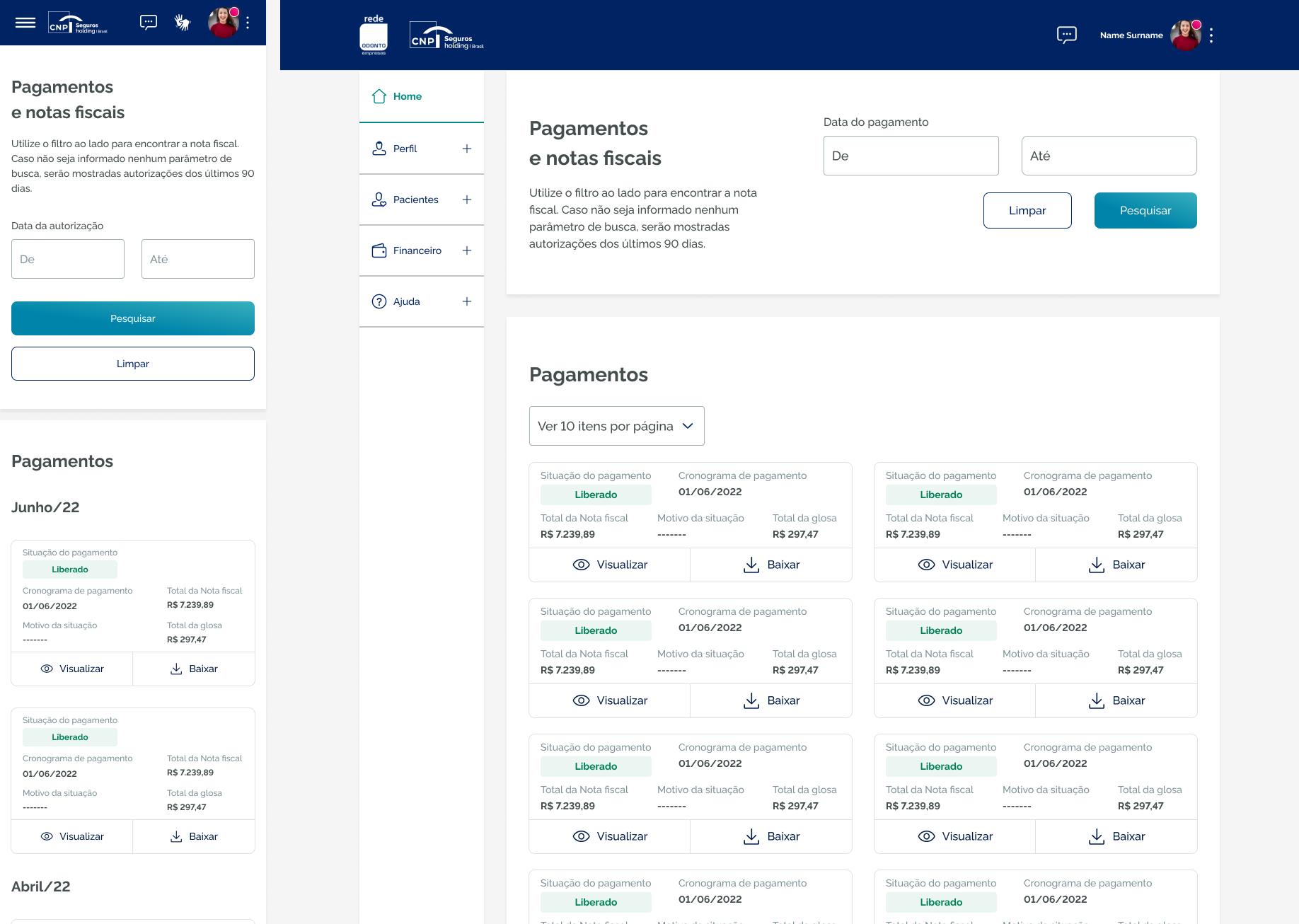
New Mobile and Web Interfaces for the Provider Portal
With the delivery of the new journey and redesigned interface, the product showed significant improvements in efficiency and user experience. The results were measured three months after the implementation of the new portal, based on support reports and internal metrics from the Odonto Empresas Network.
- Reduction in the total volume of support calls related to procedure authorizations by approximately 38%;
- The average authorization completion time has been reduced by almost half, to around 3 minutes;
- The first-attempt success rate (without rework) has practically doubled;
- Significant reduction in form completion errors through automatic validations;
- Reduction in the average audit response time.
- The portal's NPS increased from 62 to 76 in three months;
- Increased user confidence in tracking requests and reduced effort required to understand the process;
The support team began dedicating more time to critical cases, reducing internal backlog and increasing productivity.
I'm always very happy when I finish a project and see how design is a catalyst for problem-solving. For the first time, I worked with relevant data in large quantities and was able to see how a poorly executed process and design impacts the product. Working with product support, I realized how each call, each complaint, carries a story of user frustration, and how transforming that into concrete insights is one of the most important tasks of design. From this experience, I was once again convinced that respecting the process and listening to the user truly impact costs, efficiency, and user perception.